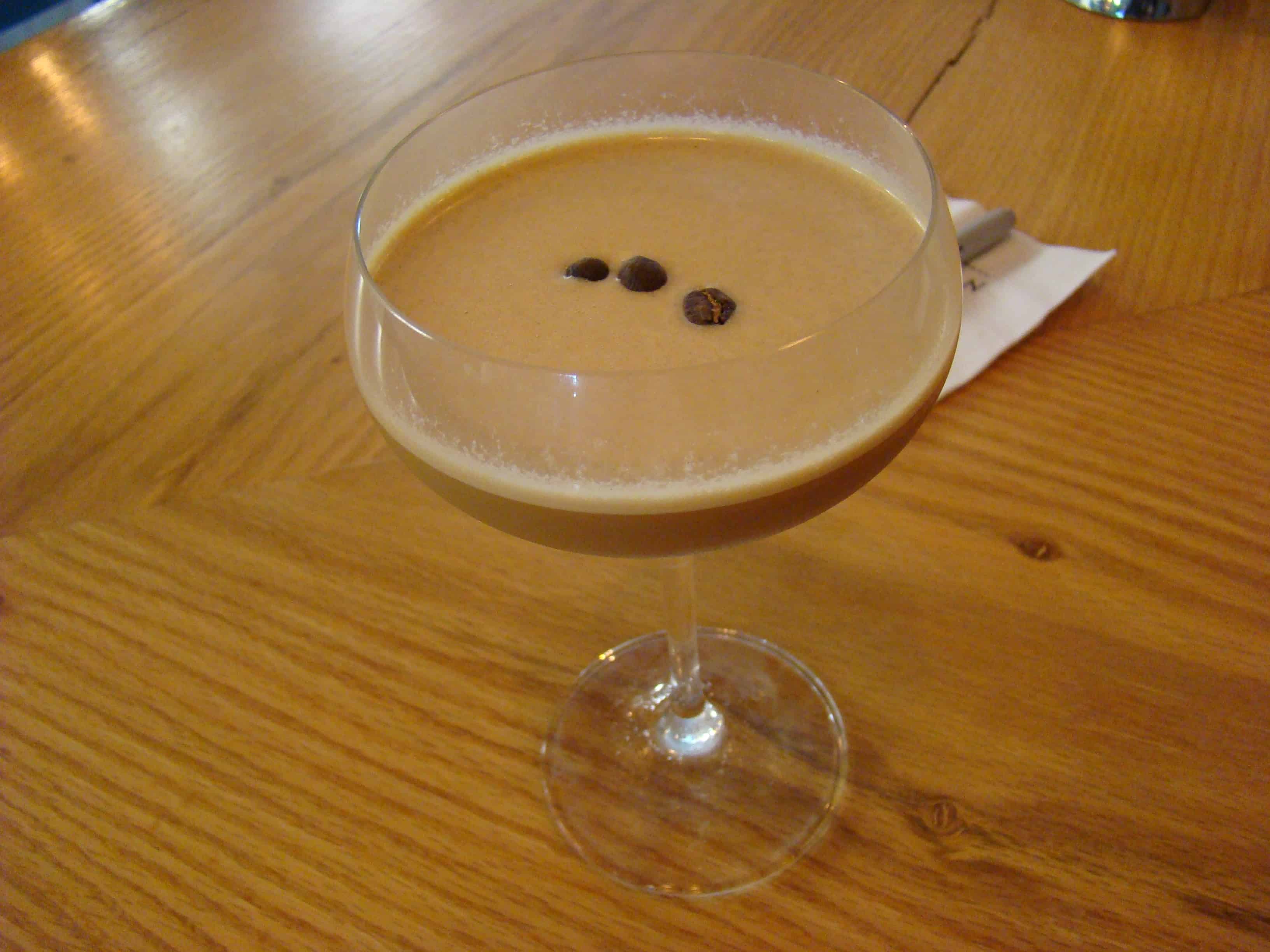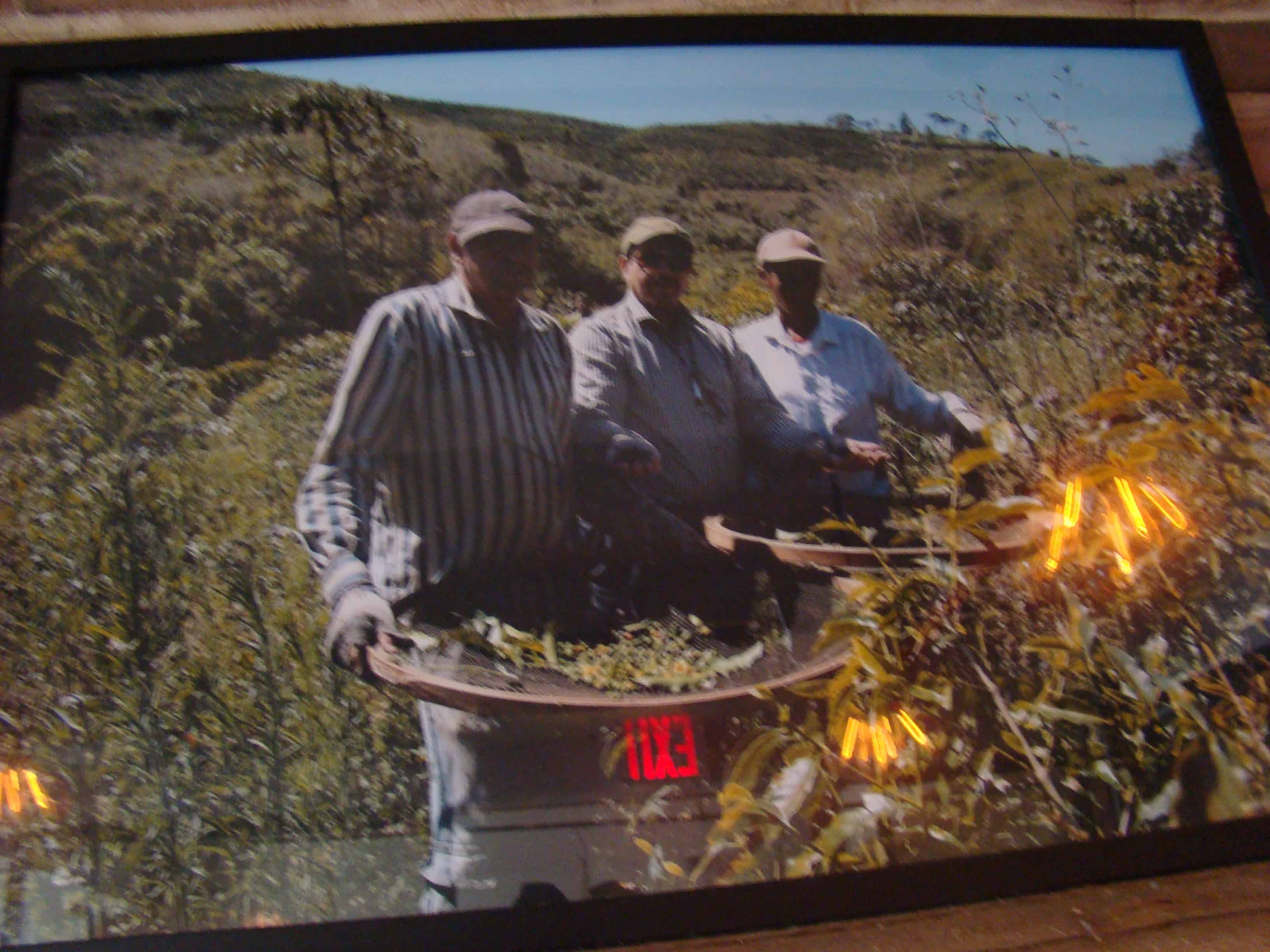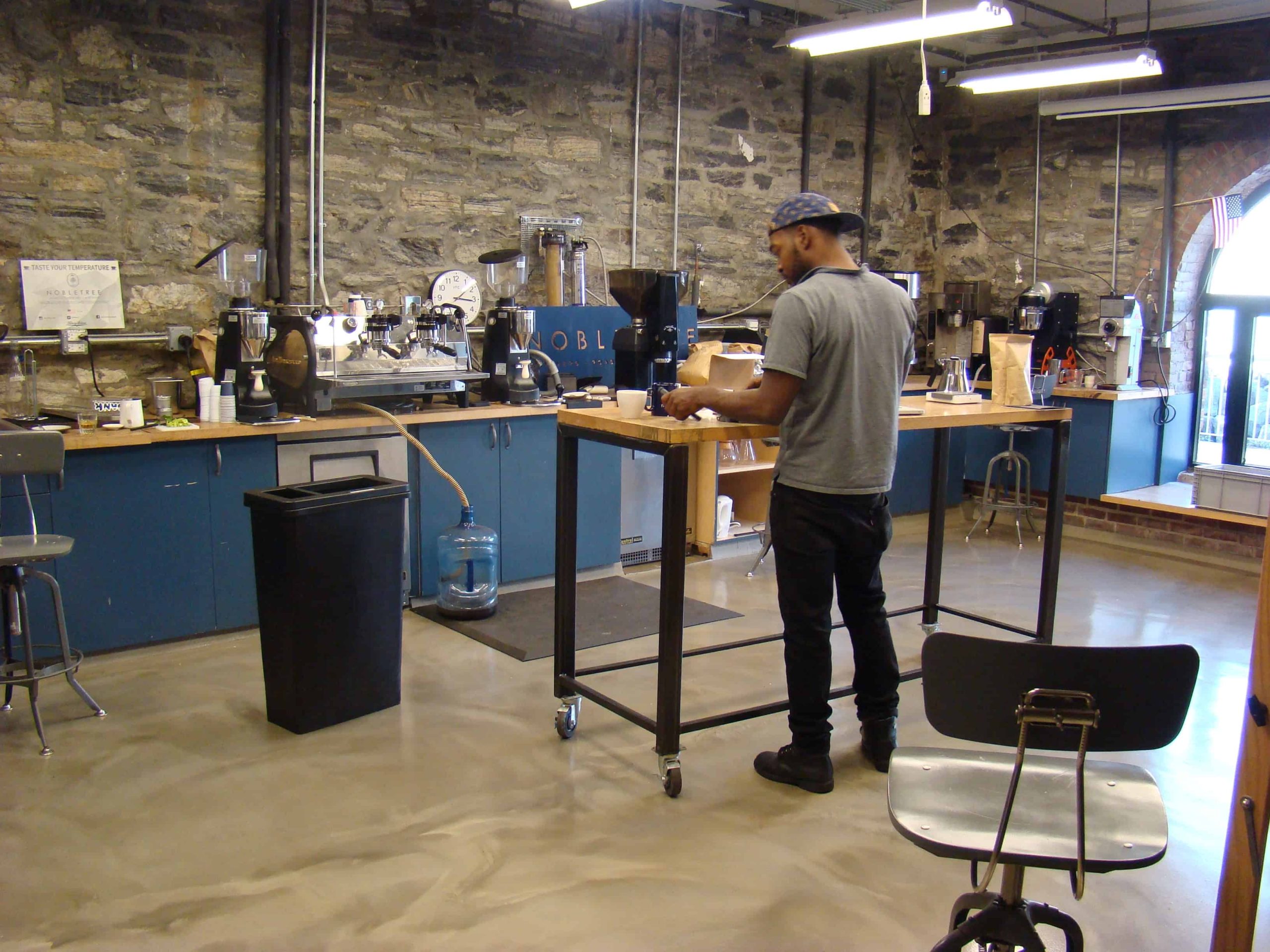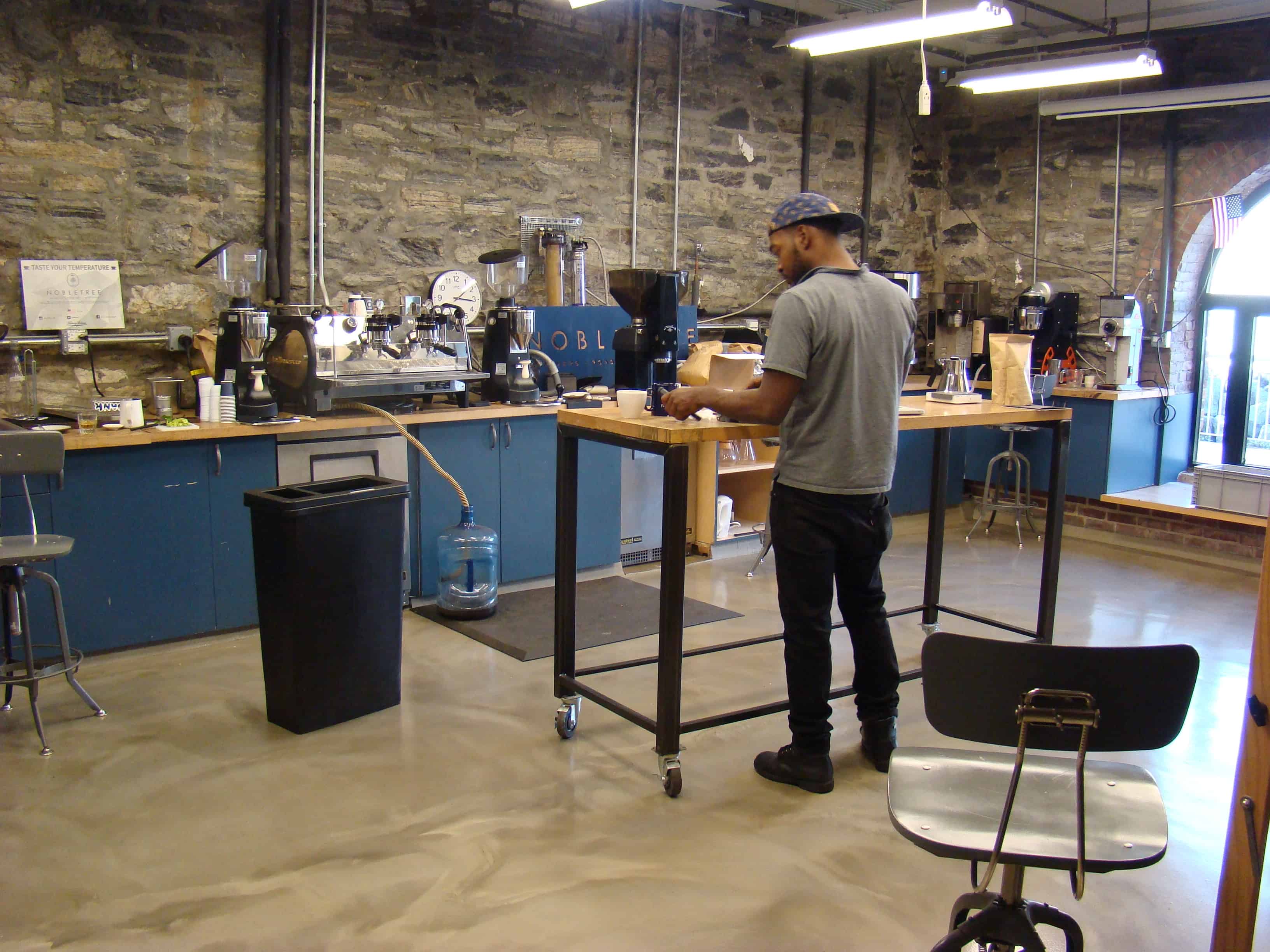
At Nobletree, the barista makes me a Cortado, a Spanish style coffee, that tastes something in-between a macchiato and a cappuccino. It’s rich and intense and is topped with frothy milk that is laced with beautiful latte art.
This is my first Cortado. It’s served in a tiny glass and is the perfect mid-morning drink that deserves some meditation on coffee and its ever-growing popularity in this city.
Nobletree, a New York based coffee company, has just opened its headquarter coffee bar and roasting facility on Red Hook’s Van Brunt pier (499 Van Brunt Street, Unit 3A). The company has taken full advantage of its great location—its expansive views of the Statue of Liberty, sun-filled meeting room, along with a cozy fireplace furnished with a welcoming leather sofa, will seduce coffee lovers.
The menu reflects a wide variety of coffees, espressos and cold brews that come from Brazil, Columbia, Kenya and Rwanda.
Also available are an assortment of teas: green, black, oolong, and herbal. The barista showcases coffee mocktails that rotate every two weeks. He did not have one when I visited but I was told he makes a Red Hook Sunrise: a drink that combines cold brew, verjus, peaches, chardonnay grapes and pomegranate.
Nina Nathel, managing director, described her vision for Nobletree.
“It’s a slow service bar where you can come in, take your time, and enjoy the coffee as opposed to going in and out like a transaction on your way to work. The point of this place is to really calm down, talk to baristas, and try a couple of things.”
Nathel, who took me on the tour, said that by the spring the space would offer community tours of the facility and a variety of educational programs.
Nobletree gets its coffee from two Brazilian farms that they bought—Santa Izabel and Monte Verde—in Brazil’s Sul de Minas region.
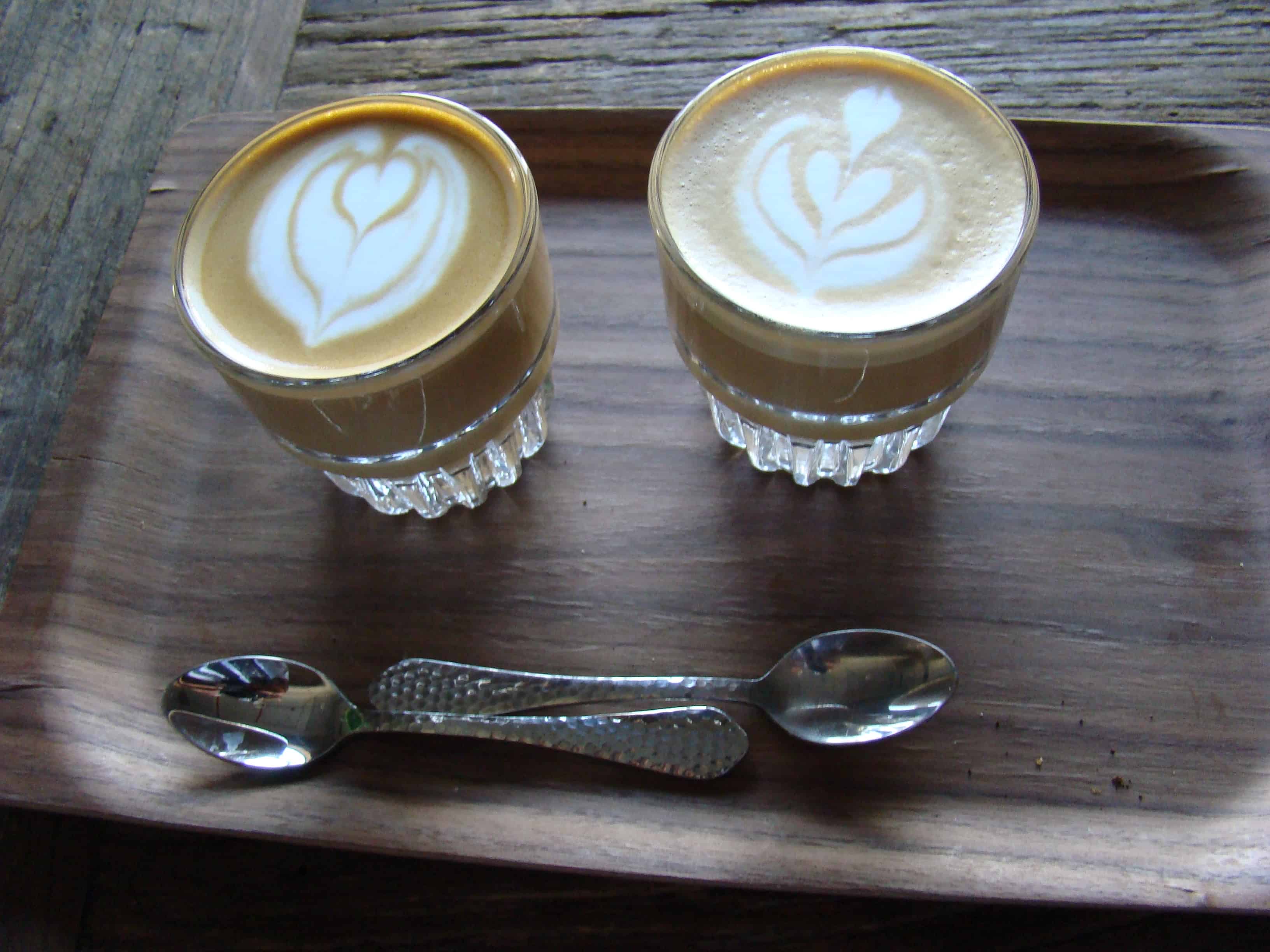
These farms produce 500,000 lbs. of coffee per year on approximately 550 acres of land. In addition, they also own a Brazilian mill where coffee is processed and sold for export. According to Nathel, owning the farms is what distinguishes Nobletree from other coffee houses.
“The point of the company was not just to be a coffee company but to be vertically integrated. That’s farming, milling and roasting under one brand. But we do buy coffee from other places to keep our profile rounded. Right now, we have coffee from Rwanda, Nicaragua and Guatemala,” explained Nathel.
The company has opened two other coffee retail locations, one in the Oculus in lower Manhattan and the other at the DeKalb Market Hall in Downtown Brooklyn. Currently, Nobletree operates only in New York, but the plan is to expand to other US cities and possibly internationally.
Nobletree is owned by a Saudi Sheik who operates the company through a board that functions autonomously. His mission, Nathel said, is not only to roast excellent coffee but also to bring awareness about where the coffee is grown. Hanging above the fireplace is a framed picture of the Sheik at one of his Brazilian farms, flanked on either side by his farmers.
According to Nathel, the term Nobletree comes from an Ethiopian coffee tree, that was originally in King Louis XIV’s greenhouse. Individuals heading to Brazil stole his trees, which were replanted in Brazil. Those trees are the descendants of all Arabic coffee grown in South America. Coffee is indigenous to Ethiopia and Africa, but today Brazil is the largest producer of coffee in the world.
Behind the café is the roastery and production facility. The space is temperature controlled to protect sacks of Brazilian coffee stored alongside coffee from other parts of the world. Nobletree currently operates a small 22 kg. roaster and a larger 55 kg one into which coffee is loaded; blades rotate and spin the coffee in the hopper under high temperatures for 12 to 15 minutes. As it roasts the coffee changes color and becomes aromatic.
“The sound it makes – ‘the first crack’ as we call it means the coffee is coming to a certain temperature and no one needs to monitor it. A screen shows what is happening in the roaster and each coffee has a profile on a computer program,” explained Nathel.
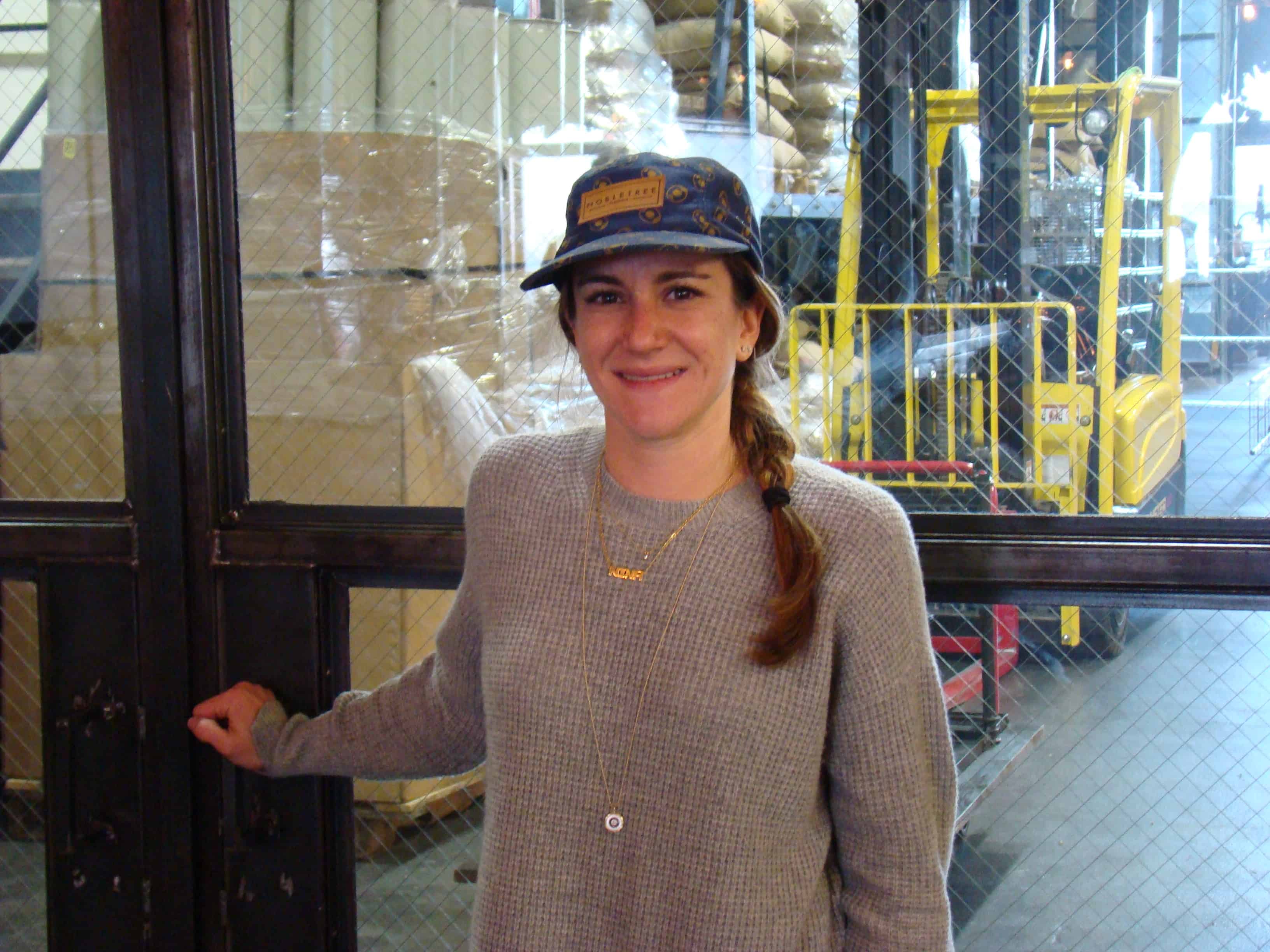
After the roast, the door is opened and the coffee is left to cool. It is then collected into a bin which is labelled and bagged. Nathel said that Nobletree does not store coffee on its shelves for more than two weeks, but added that coffee never really goes bad, it just absorbs its surrounding flavors. Nobletree sells it coffee under the brand Val café.
The plant also contains a cold brew facility which is becoming a very popular item.
On the tour I am offered a cold brew to sample. Called the Nitro, it has an effervescence, looks like a Guinness, and tastes smooth and clear. I am enjoying these samplings and have to pace myself as these coffees can be addicting.
The quality control room, which is adjacent to the bar, is where coffee is sourced, judged, and certified by Clark Le Compte, director of coffee, and a Q grader who has been with Nobletree for about a year. Le Compete grinds batches of coffee and changes the aroma by adding water. Like a sommelier, Le Compte tastes about 12 to 30 cups of coffee a day and figures the parameters that will be used for roasting and eventually for public consumption.
Finally, the room next door to the bar is the education room that will teach the public on how to make an espresso to bar standards. There will be classes on using espresso machines like the Marzocco and in January, Nathel said, training will be offered on the Slayer (another espresso machine)—more specifically on how to maintain, clean and fix it. The space will also be used to teach brewing classes, latte art, and have espresso throw-downs—a competition where baristas will be judged on different coffee processes.
Before leaving the barista temps me yet again but this time with his take of my favorite drink, a Frappuccino, made with maple syrup, milk, espresso, and topped with coffee beans. I have gone beyond my daily coffee quota but can’t resist. It was worth it.
